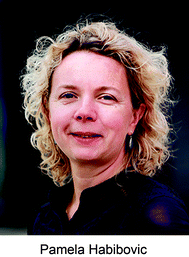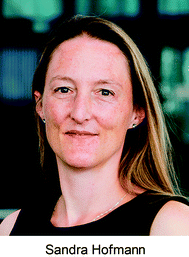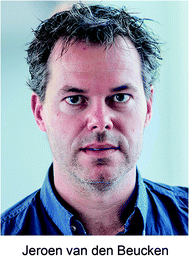29th annual conference of the European Society for Biomaterials
Pamela
Habibovic
 *a,
Sandra
Hofmann
*a,
Sandra
Hofmann
 b and
Jeroen
van den Beucken
b and
Jeroen
van den Beucken
 c
c
aESB2018 conference chair, MERLN Institute for Technology-Inspired Regenerative Medicine, Maastricht University, Maastricht, The Netherlands. E-mail: p.habibovic@maastrichtuniversity.nl
bESB2018 organizing committee member, Orthopaedic Biomechanics group, Dept. Biomedical Engineering and Institute of Complex Molecular Systems, Eindhoven University of Technology, Eindhoven, The Netherlands
cESB2018 organizing committee member, Dentistry – Regenerative Biomaterials, Radboudumc & Radboud Institute for Molecular Life Sciences, Nijmegen, The Netherlands
The conference theme ‘Materials for Life’ was chosen to express the challenges that the field of biomaterials is facing: to provide effective and affordable biomaterial-based methods to repair and regenerate damaged and diseased tissues and organs. This challenge can only be overcome by converging breakthrough developments from the fields of chemistry, physics, materials science, biology and engineering to address real clinical needs, while also considering the translational pathway from bench to bedside. Advancements in the different disciplines were apparent from the plenary presentations by world renowned leaders in biomaterials science. Confronting conclusions on the value of animal models in anticancer therapy development (by Prof. David Grainger), insights into the role of matrix mechanobiology in cellular and bacterial adhesion (by Prof. Viola Vogel), fundamentals on the role of surface-nanotopographical cues on (stem) cell differentiation and cell metabolomics (by Prof. Matthew Dalby), and translational mechanobiological interplay between matrix and cells toward cardiovascular regeneration (by Prof. Carlijn Bouten) were the topics covered by the plenary speakers, ranging in focus from fundamental mechanistic insights to advanced translational efforts in therapeutic applications. The parallel oral presentation sessions and poster sessions covered 18 diverse research topics, including ‘engineering of tissues and regenerative medicine’ and ‘3D scaffolds’ as the most prominent ones, but also novel topics such as ‘anti-cancer therapy’ and ‘computational modeling’.
This themed issue covers a selection of publications that illustrate some of the sparkling, innovative, remarkable and intriguing advances in the field of biomaterials that were presented at ESB2018. It includes, for example, a review by Zadpoor [DOI: 10.1039/C9BM01247H] on meta-biomaterials describing how architectural design and advanced additive manufacturing can jointly enable the realization of biomaterials with unusual properties. In the paper by Rottmar and co-workers [DOI: 10.1039/C9BM00814D], nicotinic acid-loaded three-dimensional silk scaffolds were explored as an immunomodulatory strategy for implantable biomaterials and tissue-engineered constructs. With the same aim, Smits and colleagues [DOI: 10.1039/C9BM01005J] investigated the effect of hemodynamic loading on macrophage polarization, for applications in biomaterial-driven vascular regeneration. In the study by Dankers and co-workers [DOI: 10.1039/C9BM01241A], co-axial electrospinning of supramolecular polymers based on hydrogen bonding ureido-pyrimidinones was used to develop elastomeric scaffolds with controlled drug release properties. Towards controlled release of multiple growth factors from polymeric implants, Moroni and colleagues [DOI: 10.1039/C9BM00979E] focused on the optimization of a growth factor layer-by-layer assembly technique. Alexander and colleagues [DOI: 10.1039/C9BM00667B] presented an elegant example of a rapid and facile synthesis route of amphiphilic co-polymers, enabling further functionalization with labels or drugs as well as good control over polymer architecture and self-assembly properties.
This selection of publications from the themed issue highlights both the advancements as well as challenges and opportunities that lie ahead for the field of biomaterials. Teams comprising experts from different disciplines, preferably with clinical and industrial involvement from an early phase of development, need to stay focused on a particular problem in healthcare or the related healthcare industry to translate the available knowledge into successful concepts and eventually products to provide diagnostic and therapeutic opportunities for biomaterials.
| This journal is © The Royal Society of Chemistry 2020 |



